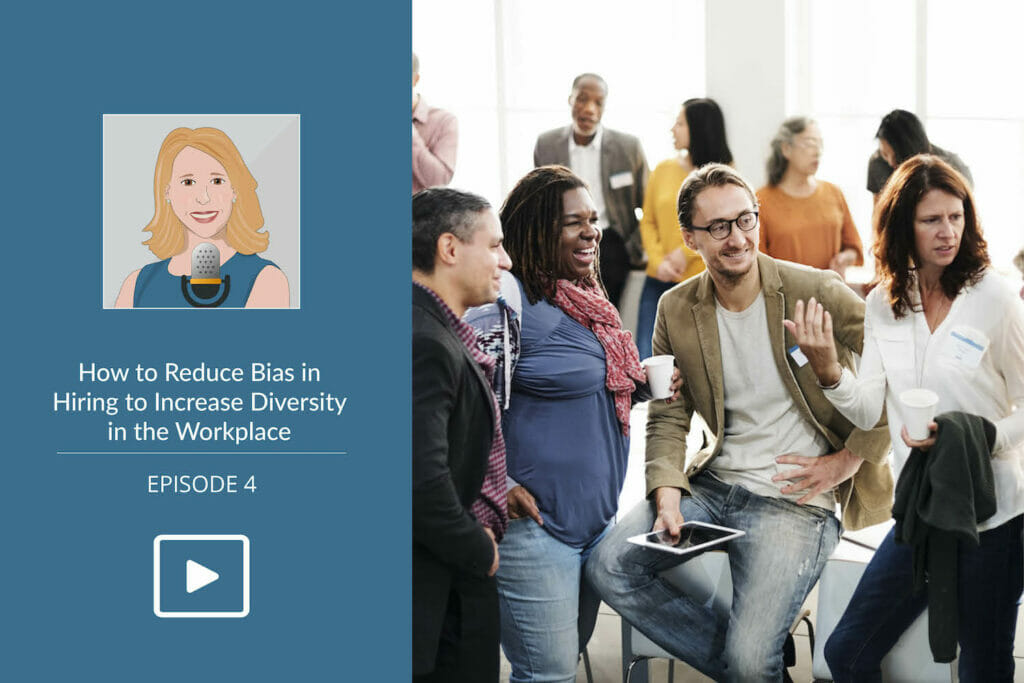
How to Reduce Bias in Hiring to Increase Diversity in the Workplace
OCT 01, 2018
How to Reduce Bias in Hiring to Increase Diversity in the Workplace
In my latest post on Building the Business Case for Diversity, I talked about the importance of “getting uncomfortable”—ensuring our diversity programs are more than just talk—by investing in high-impact training and creating tangible and honest opportunities to work on diverse teams. Once my clients have set the groundwork for an inclusive culture, it is time to rethink every part of the employee life cycle, starting with recruiting.
Our latest podcast discusses the difficult topic of unconscious bias and gets tactical about what organizations can actually do across the entire employee lifecycle, starting with recruiting. Listen below and be sure to read the five tips that are helping our clients right now.
Listen Now: The Inspired! Podcast: Reducing Bias in Hiring
First, we must acknowledge that a large part of the hiring process is based not just on judgement, but snap judgements. One study notes that nearly 60% of hiring decisions were made in the first 15 minutes of an interview. The “right” judgements, however, should have more to do with the principals and goals of our company, and less on our personal bias.
To reduce bias in the recruiting process, there are some great tactical changes that can be made right away. Before getting swept up in a new set of trends, however, I always share a word of caution to my clients. The effectiveness of any particular tactic will be highly company-specific. Similarly, any good practice needs to be anchored in a larger, more comprehensive program committed to diversity.
As we think about recruiting, there are a number of things we can do to shake up the system and challenge ourselves to think about things differently. Below are some ideas I have seen work well, along with a few important caveats:
Set goals for diversity.
I know, this one really sounds like a no-brainer, but you would be surprised at how many organizations “commit” to diversity in theory, but fail to quantitatively communicate the importance of diversity at the very first step of the employee lifecycle—hiring. It is hard to know if you are improving on diversity if you don’t know what that means for your organization and if you are not actively tracking progress. It is not enough to set these goals, but be sure all hiring managers are aware of them and that results are shared.
Hiring manager prerequisites.
Let’s face it: in a large, fast-moving organization, it may be hard to connect all of the dots. It can be a challenge to ensure that all hiring managers have been trained on the organization’s diversity goals and expectations. In one progressive company that I work with, a new job requisition cannot be opened unless the hiring manager has completed a short, but important online class about reducing bias. Putting in place “hiring manager prerequisites” is a great idea, as long as they are fast and easy, without causing a drag on the process.
Neutralizing job descriptions.
Research shows that gender-specific language in job descriptions can have a significant impact on the applicant pool. For example, masculine language (i.e., words like competitive and determined) may discourage some women from applying. Similarly, more feminine words (i.e., collaborative and cooperative) are likely to attract more women. The idea is to be very deliberate with the words that you use by either alternating the more male and more female terms, or trying to find more gender-neutral terms where possible. I would argue that this is more of an art than a science, but it is worth experimenting with different alternatives and tracking the results to find what works best for your recruiting goals.
Blind interviewing.
In my previous post Building the Business Case for Diversity, I shared some pretty compelling evidence of unconscious bias related to people’s names, ethnicities, addresses, etc. Some companies have tried to counter this phenomenon by removing personal information (not related to qualifications) from the candidate selection process. This is a great step for creating a balanced slate of candidates, but when the process moves on to in-person interviews, hiring managers need to be well informed about the company’s diversity goals to ensure that unconscious bias does not take over the latter stages of the hiring process.
Standardized interview process.
Have you ever been involved in interviews and had a shockingly different opinion of a candidate than your colleague? Something that you just could not reconcile? While we are all entitled to our opinions, it may have been the result of an open-ended interview format that invites “personal comfort” to play a role. It is easy to leave an interview with an intangible, positive feeling about someone who is similar to you, without fairly assessing their qualifications. To avoid this trap, I encourage interview teams to coordinate their questions, compare answers and ensure the candidate was effectively assessed on the merits of the job by all interviewers.
Unconscious bias may be a part of human nature, but with intentional and measured change, we can begin to reduce the damaging effects that bias has on our workforce. We can teach our hiring managers to use their judgment, but in a way that supports our diversity goals. To learn more about how Inspire works with clients on recruiting with diversity in mind, contact me at jaime@inspirehumanresources.com or (917) 612-8571.



